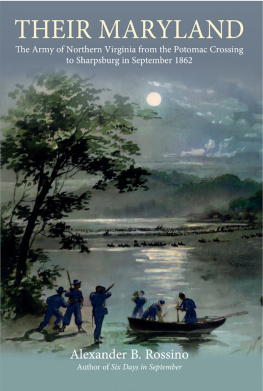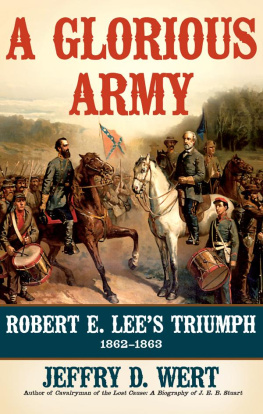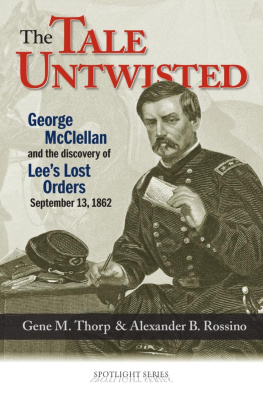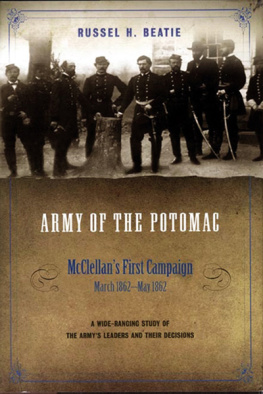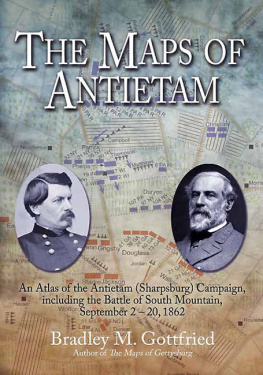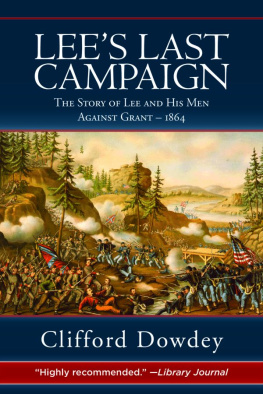Pagebreaks of the print version

T HEIR M ARYLAND
The Army of Northern Virginia from the Potomac Crossing to Sharpsburg in September 1862
Alexander B. Rossino
2021 Alexander B. Rossino
All rights reserved. No part of this publication may be reproduced, stored in a retrieval system, or transmitted, in any form or by any means, electronic, mechanical, photocopying, recording, or otherwise, without the prior written permission of the publisher.
Library of Congress Cataloging-in-Publication Data
Names: Rossino, Alexander B., 1966-author.
Title: Their Maryland: The Army of Northern Virginia from the Potomac Crossing to Sharpsburg in September 1862 / Alexander B. Rossino.
Description: California: Savas Beatie, [2021] | Includes bibliographical references and index. | Summary: Their Maryland: The Army of Northern Virginia From the Potomac Crossing to Sharpsburg in September 1862 charts the course of the Confederate military campaign in Maryland during the American Civil War. The book is organized into seven comprehensive chapters that examine Robert E. Lees motive for launching the campaign, what he hoped to accomplish, the interaction between Maryland civilians and Confederate soldiers, and explains why Lee fought the Battle of Sharpsburg/AntietamProvided by publisher.
Identifiers: LCCN 2021013959 | ISBN 9781611215571 (hardcover) | ISBN 9781611215588 (ebook)
Subjects: LCSH: MarylandHistoryCivil War, 1861-1865Campaigns. | Confederate States of America. Army of Northern Virginia. | Lee, Robert E. (Robert Edward), 1807-1870. | United StatesHistoryCivil War, 1861-1865Regimental histories. | VirginiaHistoryCivil War, 1861-1865Regimental histories.
Classification: LCC E474.61 .R67 2020 | DDC 973.7/452dc23
LC record available at https://lccn.loc.gov/2021013959
First Edition, First Printing
Savas Beatie
989 Governor Drive, Suite 102
El Dorado Hills, CA 95762
916-941-6896 /
All of our titles are available at special discount rates for bulk purchases in the United States. Contact us for information.
F OR MY FATHER , A LLEN R OSSINO, WHO FIRST TOOK ME TO A NTIETAM .
List of Maps
Photos have been placed throughout the book for the convenience of the reader.
Acknowledgments
A S it is with every book, there are too many people to thank who helped me along the way than I can possibly name here. Please know that I appreciate your efforts on my behalf.
Historical research is an arduous process under normal circumstances. When conducted amidst a global health emergency such as that attending the novel coronavirus (COVID-19) it becomes nearly impossible. Archives and libraries closed for months (some are still shuttered) as I was completing the final stages of research for this book, potentially eliminating the chance that I might get to see several key sources and collections before going to press. It is only due to the service provided by several key individuals that I found it possible to retrieve important materials and access some collections.
Rebecca Smith, Head of Reader Services and Technical Processing at The Historic New Orleans Collection, sent me an electronic copy of Alfred R. Wauds diary and sketch book, which clarified the date when Waud created his drawing of the Army of Northern Virginia crossing the Potomac River. Anita Hoffman, the Archivist at Heritage Frederick, assisted me with several weeks of digging through their records for information on Elias Delashmutt, Jr. when I could not access the facility. Similarly, Kathleen Shoemaker, the Reference Coordinator of Research Services at the Stuart A. Rose Manuscript, Archives, & Rare Book Library of Emory University, went out of her way to ensure that a reel of microfilm containing the diary of James Blackshear made it to the Western Maryland Room of the Washington County Free Library for me to examine the contents. My sincere thanks to Kathy and to Robin Vance of the Interlibrary Loan office at the Washington County Library for helping me coordinate access to the reel. Im also grateful to Stephanie Gray of the Antietam National Battlefield Library in Keedysville, and to the archivists at the Wilson Library of the University of North Carolina at Chapel Hill, for helping to provide me with material from the Southern Historical Collection. To all of the other archivists and staff at other sites I may have forgotten, I offer my deepest thanks.
Certain crucial individuals also helped my research by supplying copies of sources and references that provided excellent insight into specific subjects. Douglas J. Ashton, a specialist on Confederate Brig. Gen. William Barksdale, shared several sources concerning Rebel operations in Maryland. D. Scott Hartwig and Steven R. Stotelmyer offered support by providing scans of historical sources I never would have been able to see due to the COVID-19 emergency.
My thanks as well to those who took time to read this book in manuscript form, including Thomas G. Clemens, James M. McPherson, Ethan S. Rafuse, Bradley M. Gottfried, and Gene M. Thorp. M. Keith Harris and Cory M. Pfarr took an early look at the first chapter and encouraged me to continue with the effort. John Foskett, Esq. gave this a careful proofreading and offered thoughtful content suggestions. I value and appreciate all their help very much.
Theodore Savas at Savas Beatie deserves a big mention here for his unflagging support. Without his help the book in your hands might have never seen the light of day. Kudos as well to his fine staff at Savas Beatie, including The Sarahs (Sarah Keeney and Sarah Closson), Donna Endacott, Lisa Murphy, and Lois Olechny. I am humbly grateful for the time they invest in bringing quality history to the people. All of them are to be applauded.
Alexander B. Rossino, Ph.D.
Boonsboro, Maryland
May 2021
Introduction
T HIS book grew out of research I started in 2011 for my first work of historical fiction, Six Days in September (Savas Beatie, 2017), a novel about Lees Army in Maryland in 1862. Six Days explored two dimensions of the September 1862 Maryland Campaign via the medium of a first-person narrative: the experience of Rebel soldiers in the run-up to the clash at Sharpsburg, and the reasons why Robert E. Lee chose to fight such a dangerous battle there despite the weakness of his army. My original research uncovered information I never had the opportunity to use in Six Days ; ongoing research conducted after the books publication added to the unused source material.
Faced with this growing collection of material, it occurred to me that an audience interested in the history of Lees army in Maryland might want to read some of my findings in a non-fiction format rather than in a work of historical fiction. Many readers hold biases in both directions: some will not read historical fiction under any circumstances, no matter how closely it is sourced, while others prefer fiction over footnoted scholarly accounts. Being a historian by training and inclination, I can relate to each type of reader. Finding myself with a foot in both worlds, I decided to write this set of loosely related chapters about the Confederate experience in Maryland. They focus equally on General Lee and on the men of his army. I hope they satisfy non-fiction readers I have not yet had the opportunity to reach.

